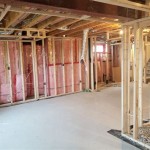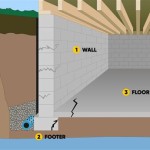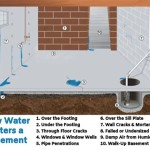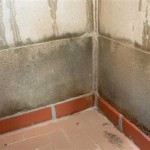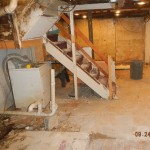Essential Aspects of Installing a French Drain in a Finished Basement
French drains are crucial for safeguarding finished basements from water damage and maintaining their comfort and livability. Installing a French drain involves meticulous planning and execution to ensure its effectiveness and longevity. Here are some essential aspects to consider when installing a French drain in a finished basement:
1. Identifying the Source of Water Intrusion
Before installing a French drain, it is imperative to determine the source of water intrusion. This involves inspecting the basement walls, floors, and windows for cracks, gaps, or leaks. Addressing the root cause of water infiltration, such as repairing leaks or sealing entry points, is crucial to prevent future water problems.
2. Professional Installation
The installation of a French drain requires專業 expertise and experience. Improper installation can lead to ineffective drainage, structural damage, or mold growth. Hiring a licensed and experienced contractor ensures that the drain is designed and installed correctly, meeting building codes and ensuring it functions optimally.
3. Drain Placement and Slope
French drains should be installed around the perimeter of the basement, close to the footings. The drainpipes are typically made of perforated PVC pipe, which allows water to seep in and be carried away from the foundation. The drain should be sloped slightly downward, directing water towards a sump pump or drain outlet.
4. Gravel or Crushed Stone
Gravel or crushed stone is installed around the French drain to facilitate water filtration and prevent clogging. The gravel layer acts as a reservoir, collecting water that seeps through the ground and allowing it to flow into the drainpipe. The size and depth of the gravel layer should be determined based on the soil conditions and volume of water expected.
5. Sump Pump or Drain Outlet
The water collected by the French drain must be discharged away from the basement. This can be achieved using a sump pump or a gravity-fed drain outlet. Sump pumps are installed in a sump basin and automatically pump out water when it reaches a certain level. Gravity-fed drain outlets rely on the natural slope of the land to direct water away from the house.
6. Finishing Touches
Once the French drain is installed, the basement floor can be restored to its original finish. This may involve pouring new concrete or installing flooring materials that are resistant to moisture and mold. Sealing any remaining gaps or cracks around pipes or wires is also essential to prevent water infiltration.
7. Maintenance and Inspection
Regular maintenance is crucial to ensure the continued effectiveness of the French drain. This includes periodically cleaning the drainpipe and gravel layer to remove debris and prevent clogging. Inspecting the drain for any damage or blockages is also recommended. Timely maintenance helps prevent water buildup and costly repairs in the future.

Floor Drains Finished Basements Best Practices Solutions Csg Renovation

Grated French Drain Pipe Foundation Systems Of Michigan

Basement French Drains Jersey Shore Crawlspace Enhancement

French Drain For A Basement Toms River Patch

Dealing With Basement Water From The Inside Greenbuildingadvisor

Baseboard Basement Drain Pipe System In Connecticut Homes French Company

Quality 1st Basement Systems Waterproofing Photo Album French Drain System Installed In Milltown

Perimeter Drainage Systems Insofast Insulation Panels

Basement French Drains Jersey Shore Crawlspace Enhancement

Nine Steps To Take Before Finishing Your Basement Newburgh Middletown Poughkeepsie New York
See Also

